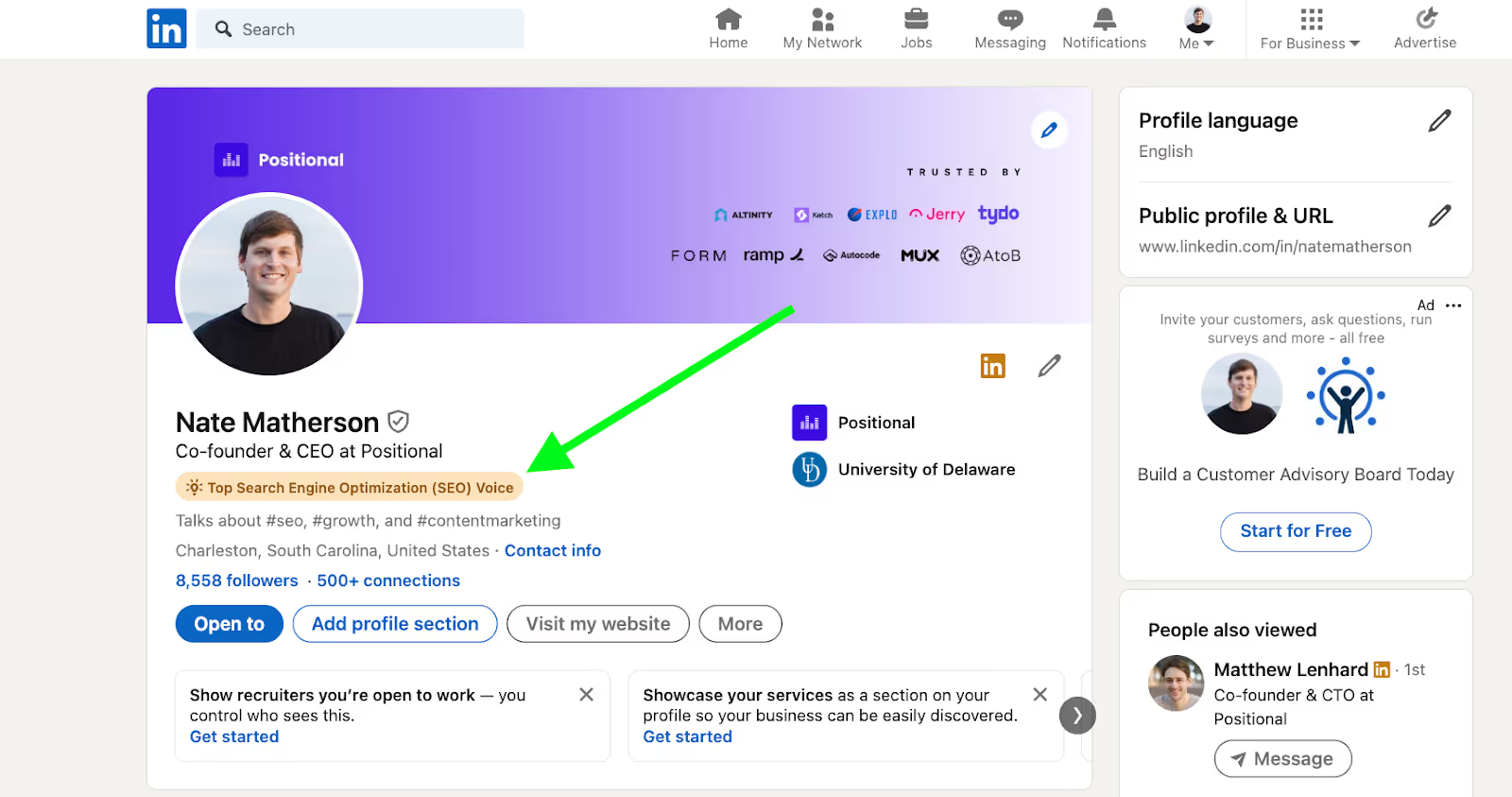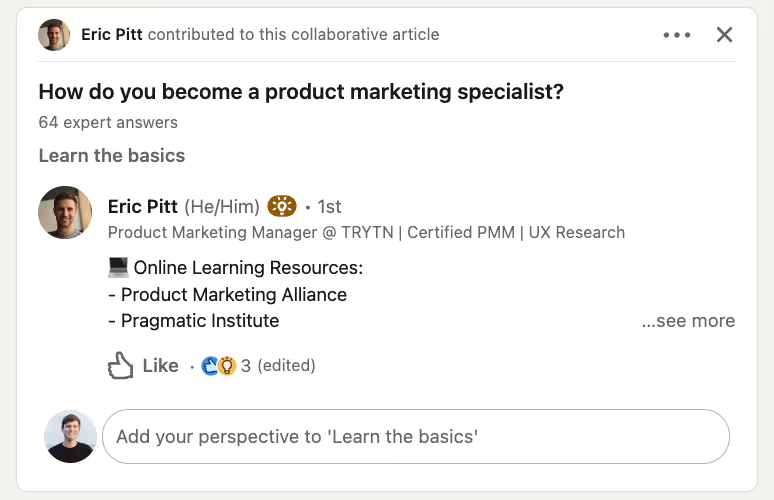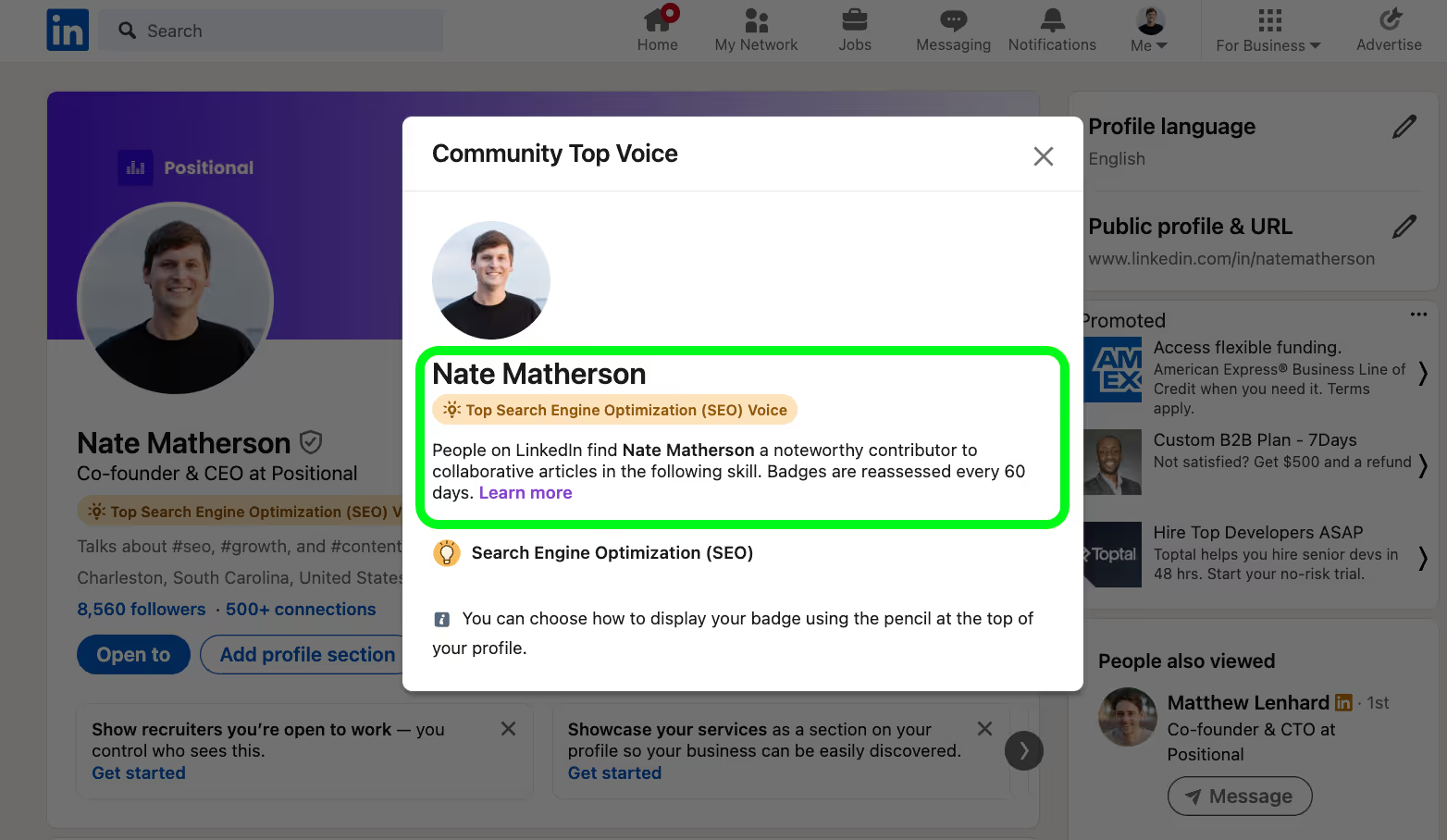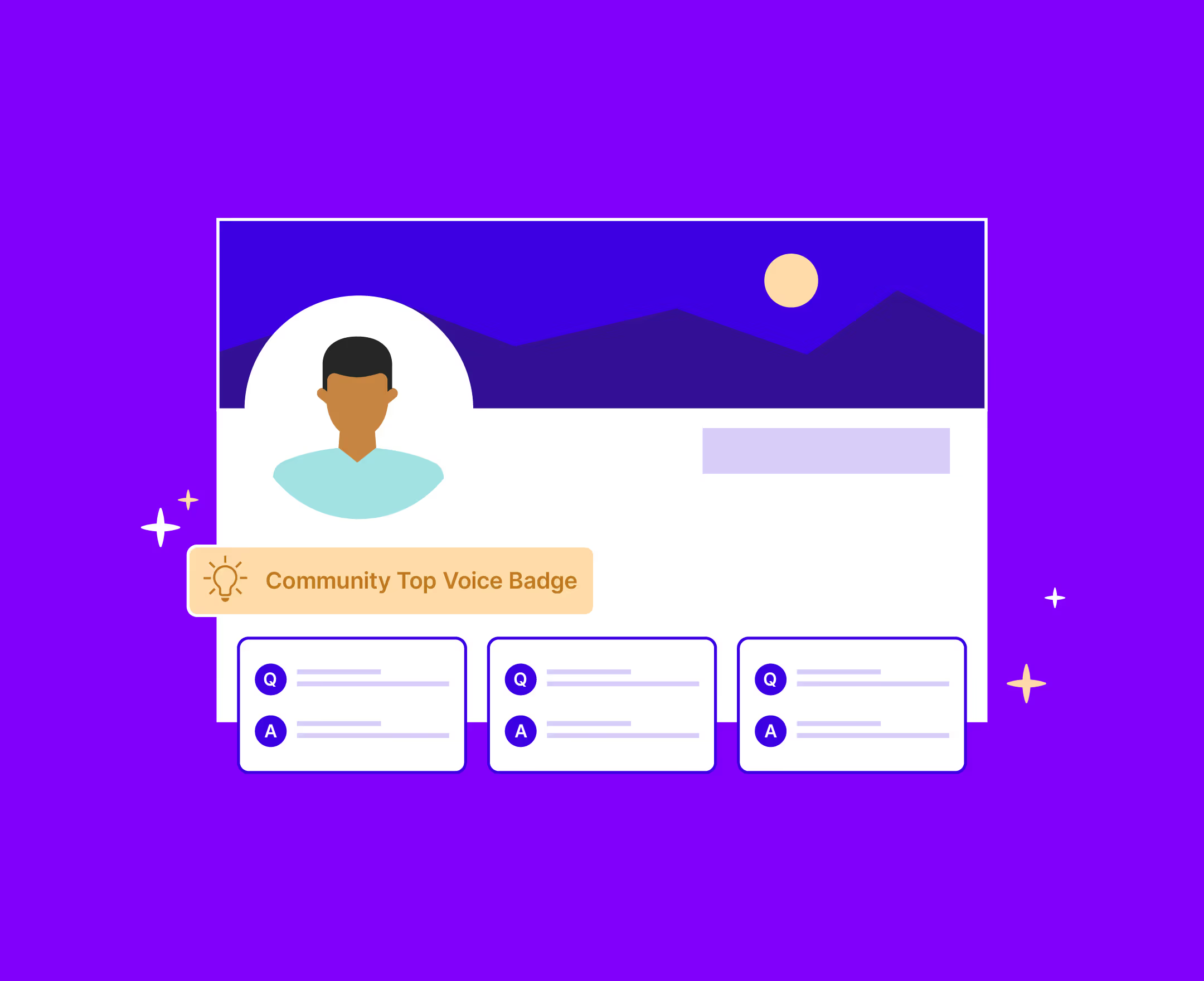I recently received a Community Top Voice badge from LinkedIn. I admit that I’m a sucker for gold stars and badges. And given that we’ve started repurposing much more of our blog content to LinkedIn, I wanted to enhance my LinkedIn profile with a symbol of authority and trustworthiness.

LinkedIn introduced light gold Community Top Voice badges in 2023 as part of their rollout of collaborative articles. These Community Top Voice badges are not to be confused with LinkedIn’s blue Top Voice badges (the Top Voices program was previously called the LinkedIn Influencer program): People join LinkedIn’s Top Voices program by invitation only; it features people LinkedIn has recognized as “senior-level experts and leaders.” Community Top Voice badges, on the other hand, are given to “members who make noteworthy contributions to collaborative articles on LinkedIn.” The two badges aren’t related — earning one has nothing to do with earning the other.
Getting one of the light gold Community Top Voice badges is fairly easy. Here’s the process that I used to get a Top Search Engine Optimization (SEO) Voice badge on my LinkedIn profile.
Choose a Topic Category
Start by going to LinkedIn’s Collaborative Articles section on their website. On the right-hand side, you’ll see a number of suggested topics to contribute to:

Some of the topics are fairly broad, for example, Marketing. But some of the topic categories are a lot more specific, for example, Search Engine Optimization and Content Management. You’ll notice that certain topics are a lot more active than others.
To get a Community Top Voices badge, you’ll need to be in the top percentage of contributors to a certain topic. You can earn as many badges as you’d like, but for your first badge, I’d suggest picking a topic category that is less competitive. For example, the Marketing topic category is going to be a lot more competitive than the Content Management topic category.
To get into the running for a badge, you’ll typically need to contribute a minimum number of times to a topic category — often three times:

However, on a topic-by-topic basis, it’s unclear what the exact threshold or number of contributions required to actually get a badge is. In Search Engine Optimization, for example, I had to get into the top 5% of contributors:

LinkedIn doesn’t specify how top contributors are determined. But I assume that the calculation depends heavily on the raw number of contributions you make to a topic. Although it’s possible that engagement, or how people respond to your contributions, also plays a role in determining whether you’re a quality contributor.
LinkedIn does say that your contributions shouldn’t be repetitive, copied, or plagiarized; that they should be helpful; and that you need to follow their Professional Community Policies.
Start Answering Questions, and Stay Consistent
Over the course of about two weeks I started contributing to the Search Engine Optimization topic. I averaged about two high-quality responses per day, creating roughly 30 responses over that two-week period.
I generally tried to pick questions that I was excited to answer and that were relevant to our business. I sometimes mentioned our product and service subtly in my responses, too — for example, in a collaborative article about the best SEO tools. And I’d often pick questions that I had recently written about on our blog, given that those questions were top of mind for me.
You can contribute up to 750 characters of text in your response, and I often found myself hitting this limit, as I wrote fairly detailed responses.
As I contributed, LinkedIn alerted me that I was getting close to getting a badge. For example, after about ten days of contributing, I was in the top 13% of SEO contributors; then I made a small push with seven more contributions, and I got the badge.
LinkedIn showed me my progress only once, at the top 13% milestone. And it’s unclear how and when they will actually show you your progress.
As you contribute to collaborative articles, your responses show up in LinkedIn’s feed:

I found that my LinkedIn followers would often engage with or like my responses.
After you’ve reached top contributor status, in my case, the top 5% of Search Engine Optimization contributors, LinkedIn sent me a notification that I had received the badge and that I could add it to my profile.
Adding the Badge to Your Profile
Once you’ve been granted a badge, adding it to your LinkedIn profile is very easy. Go to your profile and click on the settings button (the pencil icon):

Next, scroll down until you see Community Top Voice Badge:

If you have multiple badges, you’ll want to select the badge that you’d like to appear on your profile. You can select only one badge at a time. You’ll then click on the button to show the badge in the intro section of your profile.
Keep Answering Questions to Keep Your Badge
Once you’ve received a Community Top Voice badge, you need to continue contributing to the topic category in order to maintain your status as a top contributor. LinkedIn makes it clear that badges are reassessed every 60 days:

As of this writing, it has been about 60 days since I received my badge, and I haven’t contributed anything to the Search Engine Optimization topic since I received my badge. I am currently at risk of losing my badge, and I’m planning to contribute a number of new responses shortly.
LinkedIn does state that your badges are considered independent from one another and that you might lose a badge in one topic category but retain a badge in another category, depending on how active you are in each category.
Why Did LinkedIn Introduce Collaborative Articles?
While LinkedIn’s goal for its collaborative articles project is unclear, my guess is that LinkedIn is trying to drive additional search traffic to its website by ranking for a large number of very long-tail keywords.

Websites like Reddit and Quora have surged in organic search rankings as Google has worked to introduce more authoritative UGC (user-generated content) in its search engine results pages. I’d assume that LinkedIn introduced this new Community Top Voice badge as a way to incentivize experts to enrich the collaborative articles being generated on LinkedIn’s website. And it seems to be working:

LinkedIn’s /advice path, where the collaborative articles are hosted, has seen significant growth in organic search traffic over the past year, generating nearly 500,000 visitors per month from organic search.
In addition, given that the responses to collaborative articles are shown on LinkedIn’s feed, I’m sure that the influx of hopefully beneficial content has been helpful in increasing engagement within the feed.
Final Thoughts
Was getting a Community Top Voice badge worthwhile?
I think so, as it took minimal effort and approximately two hours of time. And in the process of responding to collaborative articles, I was able to generate meaningful engagement with my responses. A bonus!
I do think the badge adds credibility to my LinkedIn profile. I have noticed an uptick in engagement on my LinkedIn posts since receiving this badge, but it’s unclear whether that is due to the fact that I’ve just been a lot more active on LinkedIn or due to the fact that LinkedIn’s algorithm provides increased reach and engagement for folks who are considered top contributors — or both.
At Positional, we’re building tools for content marketing and SEO teams — including a number of tools that will help you amplify the content you’re creating.





